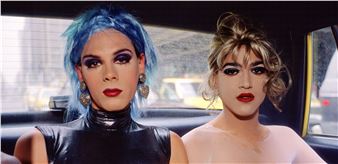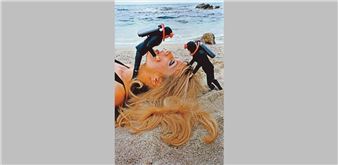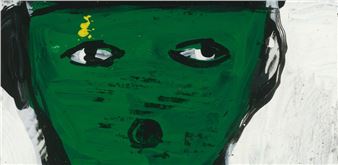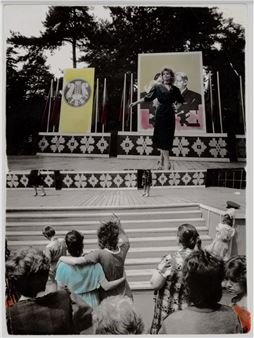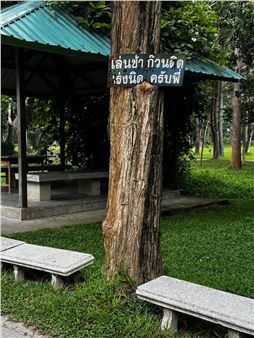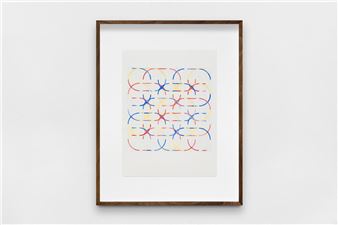Robert Mapplethorpe: Objects
Galerie Thaddaeus Ropac presents the exhibition Objects, with unique early pieces by Robert Mapplethorpe shown for the first time in Paris.
Dating from the late sixties until the mid-eighties, these rarely exhibited works demonstrate Mapplethorpe's range of techniques and his commitment to a personal vision throughout his life. Never afraid to offend or break rules, he expanded the notion of what is possible in art. These objects and collages reflect his radical and often provocative approach, embedded in the sociocultural context of the New York gay underground community.
Mapplethorpe’s early works seem inhabited by a mysterious and poetic power. They reveal his fascination for subjects such as mysticism, esotericism and fetishism. In style and iconography, they are an exciting mix between Duchamp’s ready-mades and Dali’s psychosexual divagations. Drawn to symbols and geometric motifs, Mapplethorpe made many collages and arrangements evoking religious imagery, while interpreting and transgressing its traditional associations. He also explored darker subjects such as black magic and Tantra Art, and redesigned Tarot cards, replacing the imagery with male figures taken from men's pornographic magazines.
Included in the exhibition, a rare 1968 collage, Untitled (Madonna Medaillon), presents an image of the Madonna in a hand-drawn geometric architecture. In a manner reminiscent of Surrealism, the figure seems to levitate on a shell-like organic shape, which may also evoke an anatomical view of male genitalia. Outside the frame, a felt sticker representing the Sacred Heart of Jesus emblematises Mapplethorpe’s interest in recycling religious paraphernalia and mixing it with sexual references.
Jay Kiss (1973) highlights the fetishist dimension of Mapplethorpe’s work. On a red-painted wooden structure, a silk scarf hangs beneath an enlarged Polaroid portrait of his friend Jay Johnson. A token of a tender memory, the actual scarf is the one Jay wears in the picture, where he is lovingly represented with his eyes closed. The innovative composition recalls an ex-voto, usually given in gratitude or devotion in a religious context.
A later large triangle sculpture, Untitled (1983), shows the artist’s longstanding fascination for formal perfection and symmetry, largely drawn from the Christian liturgy. « A church has a certain magic and mystery for a child, » Mapplethorpe told Ingrid Sischy. « It still shows in how I arrange things. It’s always little altars. It’s always been this way-whenever I’d put something together I’d notice it was symmetrical.[1] »
Once again, Mapplethorpe plays with the ambivalence of the X symbol, which carries both a religious and pornographic connotation. While the inscription of his own name and the felt coloured stripes give a mystical dimension to what can be read as an abstract self-portrait.
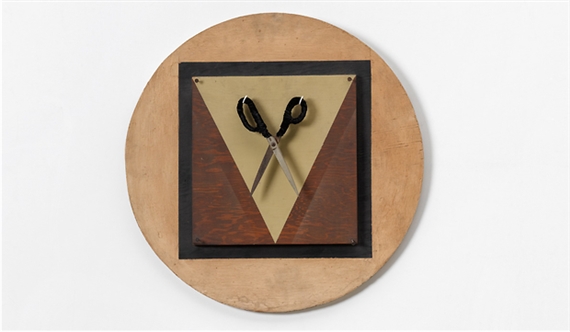
Recommended for you
Galerie Thaddaeus Ropac presents the exhibition Objects, with unique early pieces by Robert Mapplethorpe shown for the first time in Paris.
Dating from the late sixties until the mid-eighties, these rarely exhibited works demonstrate Mapplethorpe's range of techniques and his commitment to a personal vision throughout his life. Never afraid to offend or break rules, he expanded the notion of what is possible in art. These objects and collages reflect his radical and often provocative approach, embedded in the sociocultural context of the New York gay underground community.
Mapplethorpe’s early works seem inhabited by a mysterious and poetic power. They reveal his fascination for subjects such as mysticism, esotericism and fetishism. In style and iconography, they are an exciting mix between Duchamp’s ready-mades and Dali’s psychosexual divagations. Drawn to symbols and geometric motifs, Mapplethorpe made many collages and arrangements evoking religious imagery, while interpreting and transgressing its traditional associations. He also explored darker subjects such as black magic and Tantra Art, and redesigned Tarot cards, replacing the imagery with male figures taken from men's pornographic magazines.
Included in the exhibition, a rare 1968 collage, Untitled (Madonna Medaillon), presents an image of the Madonna in a hand-drawn geometric architecture. In a manner reminiscent of Surrealism, the figure seems to levitate on a shell-like organic shape, which may also evoke an anatomical view of male genitalia. Outside the frame, a felt sticker representing the Sacred Heart of Jesus emblematises Mapplethorpe’s interest in recycling religious paraphernalia and mixing it with sexual references.
Jay Kiss (1973) highlights the fetishist dimension of Mapplethorpe’s work. On a red-painted wooden structure, a silk scarf hangs beneath an enlarged Polaroid portrait of his friend Jay Johnson. A token of a tender memory, the actual scarf is the one Jay wears in the picture, where he is lovingly represented with his eyes closed. The innovative composition recalls an ex-voto, usually given in gratitude or devotion in a religious context.
A later large triangle sculpture, Untitled (1983), shows the artist’s longstanding fascination for formal perfection and symmetry, largely drawn from the Christian liturgy. « A church has a certain magic and mystery for a child, » Mapplethorpe told Ingrid Sischy. « It still shows in how I arrange things. It’s always little altars. It’s always been this way-whenever I’d put something together I’d notice it was symmetrical.[1] »
Once again, Mapplethorpe plays with the ambivalence of the X symbol, which carries both a religious and pornographic connotation. While the inscription of his own name and the felt coloured stripes give a mystical dimension to what can be read as an abstract self-portrait.

 ARTISTS
ARTISTS









